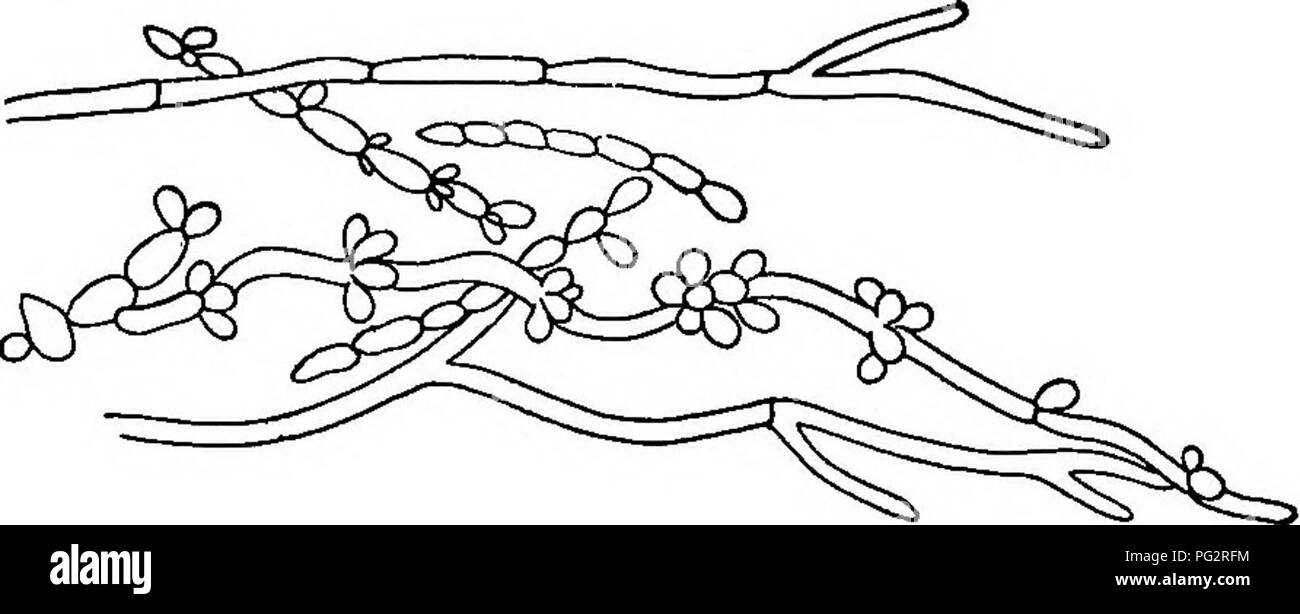. Bacteria, yeasts and molds in the home. Bacteriology; Yeast fungi; Molds (Fungi). THE DECAY OF FRUIT 59 decaying apples, pears, lemons, and bananas, the differ- ence in the character of the decay is quite evident both to the eye and to the smell. Bitter rot, black rot, and brown rot are three types produced by three different organisms. It is not within the scope of our study to describe the different kinds of decay which appear in com- mon fruit. The causes may be numerous, but in the majority of the examples of decayed fruit the active agency,. Fig. 22. Monilia, a common species of mold ca

Image details
Contributor:
Central Historic Books / Alamy Stock PhotoImage ID:
PG2RFMFile size:
7.1 MB (201.5 KB Compressed download)Releases:
Model - no | Property - noDo I need a release?Dimensions:
2488 x 1004 px | 21.1 x 8.5 cm | 8.3 x 3.3 inches | 300dpiMore information:
This image is a public domain image, which means either that copyright has expired in the image or the copyright holder has waived their copyright. Alamy charges you a fee for access to the high resolution copy of the image.
This image could have imperfections as it’s either historical or reportage.
. Bacteria, yeasts and molds in the home. Bacteriology; Yeast fungi; Molds (Fungi). THE DECAY OF FRUIT 59 decaying apples, pears, lemons, and bananas, the differ- ence in the character of the decay is quite evident both to the eye and to the smell. Bitter rot, black rot, and brown rot are three types produced by three different organisms. It is not within the scope of our study to describe the different kinds of decay which appear in com- mon fruit. The causes may be numerous, but in the majority of the examples of decayed fruit the active agency, . Fig. 22. Monilia, a common species of mold causing fruit decay. at the start at least, is the growth of molds. In later stages of the decay bacteria may be concerned, but it is always molds that begin the process. There are a num- ber of species of molds intimately associated with the decay of fruits. The common blue mold (Fig. 7) is one of the most widely distributed, but there are several others (Figs. 2'2, 23, 24). Method of Infection and Distribution To understand the decay of fruit we must first bear in mind that mold spores are constantly floating in the air, and that they may also be carried easily upon the feet of insects that chance to light upon a bit of spore-bearing mold. By some such agency mold spores are quite sure. Please note that these images are extracted from scanned page images that may have been digitally enhanced for readability - coloration and appearance of these illustrations may not perfectly resemble the original work.. Conn, H. W. (Herbert William), b. 1859. Boston, New York, Ginn and Company